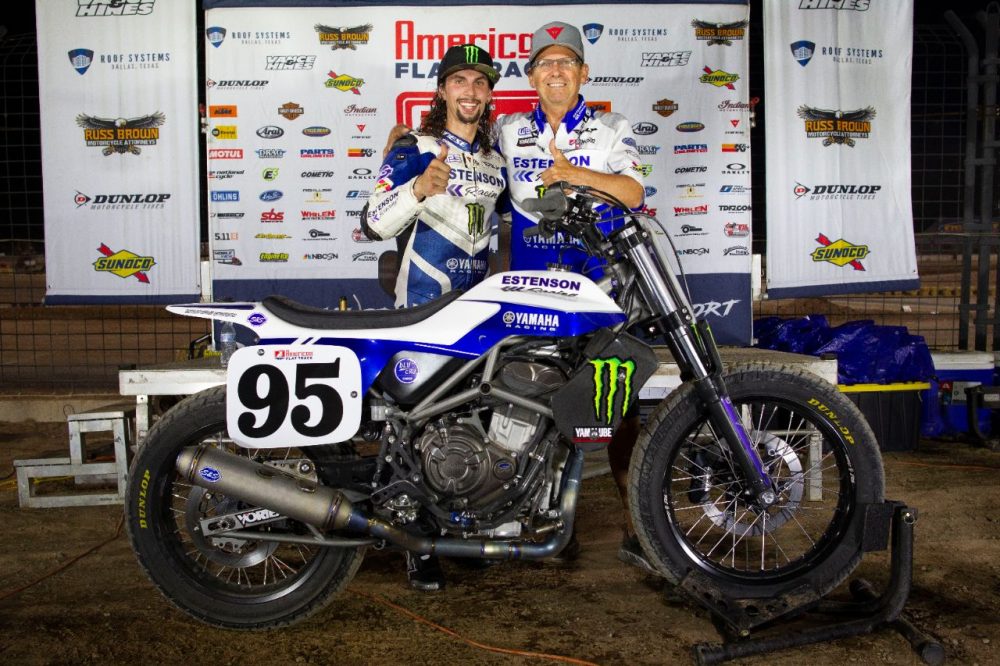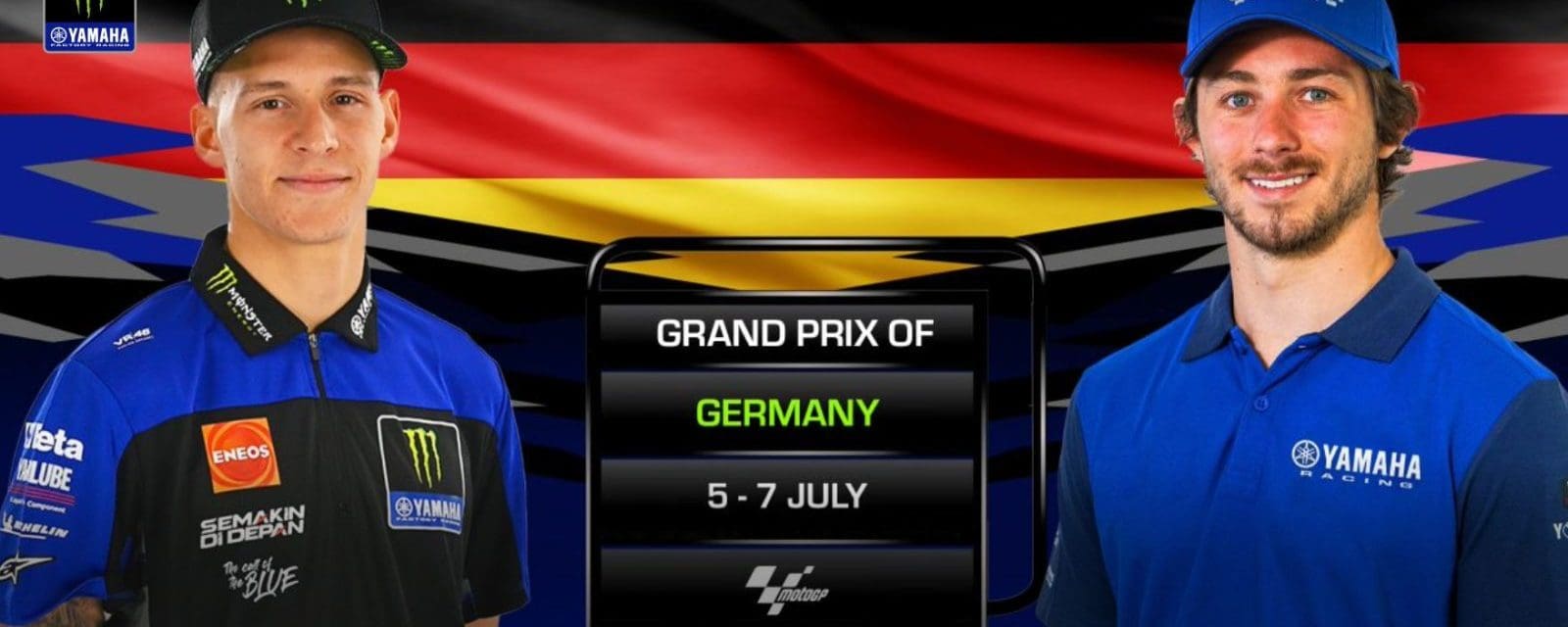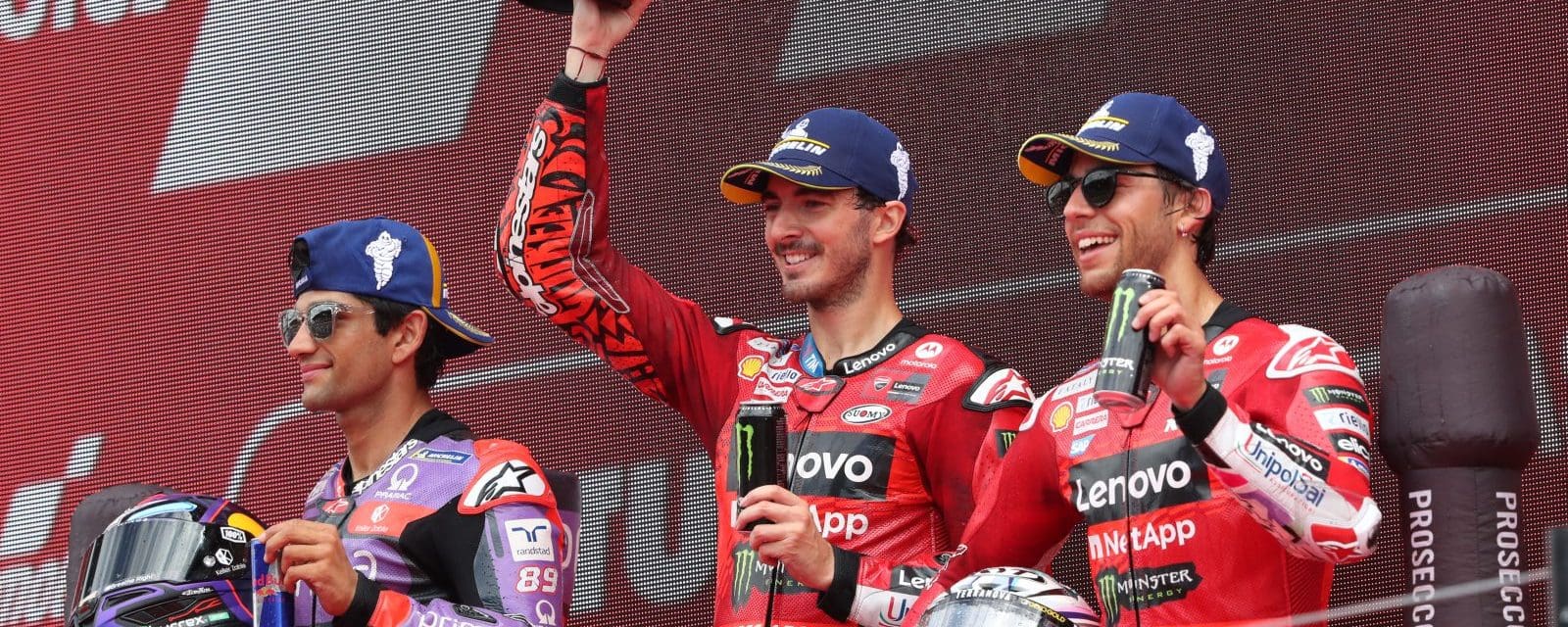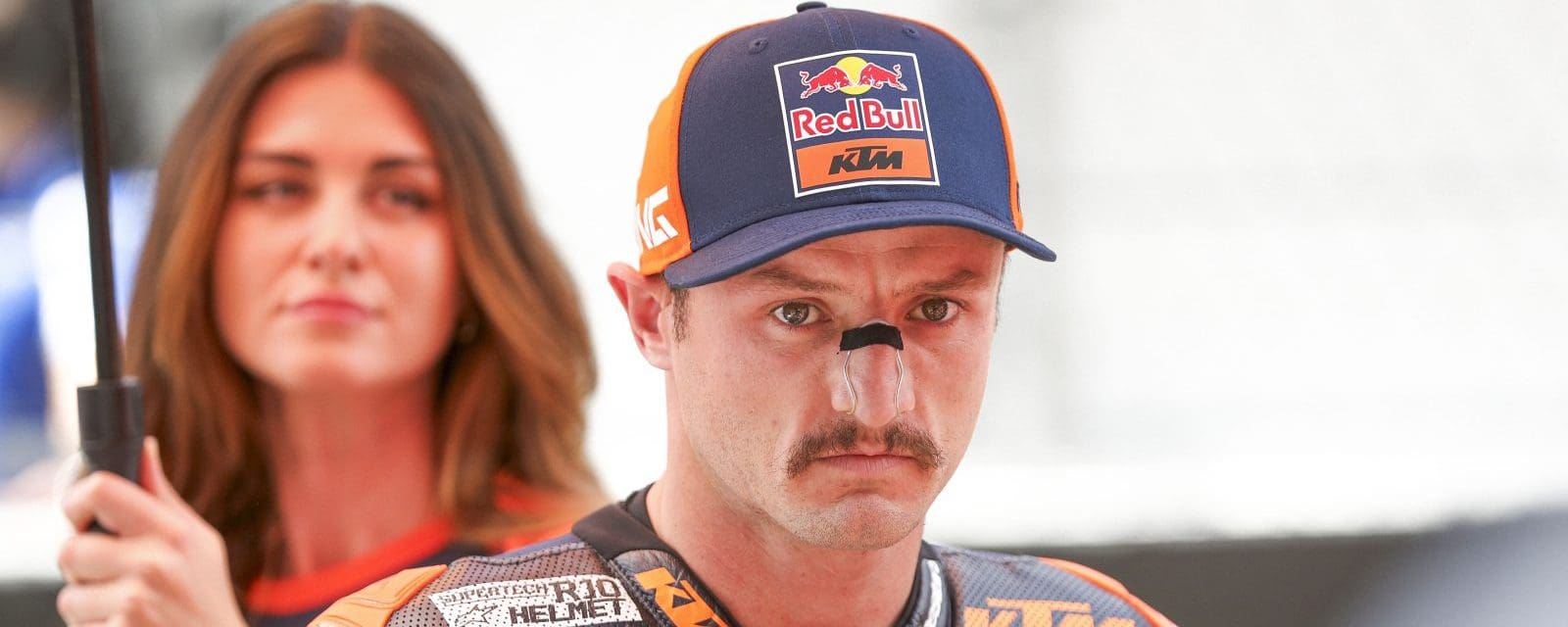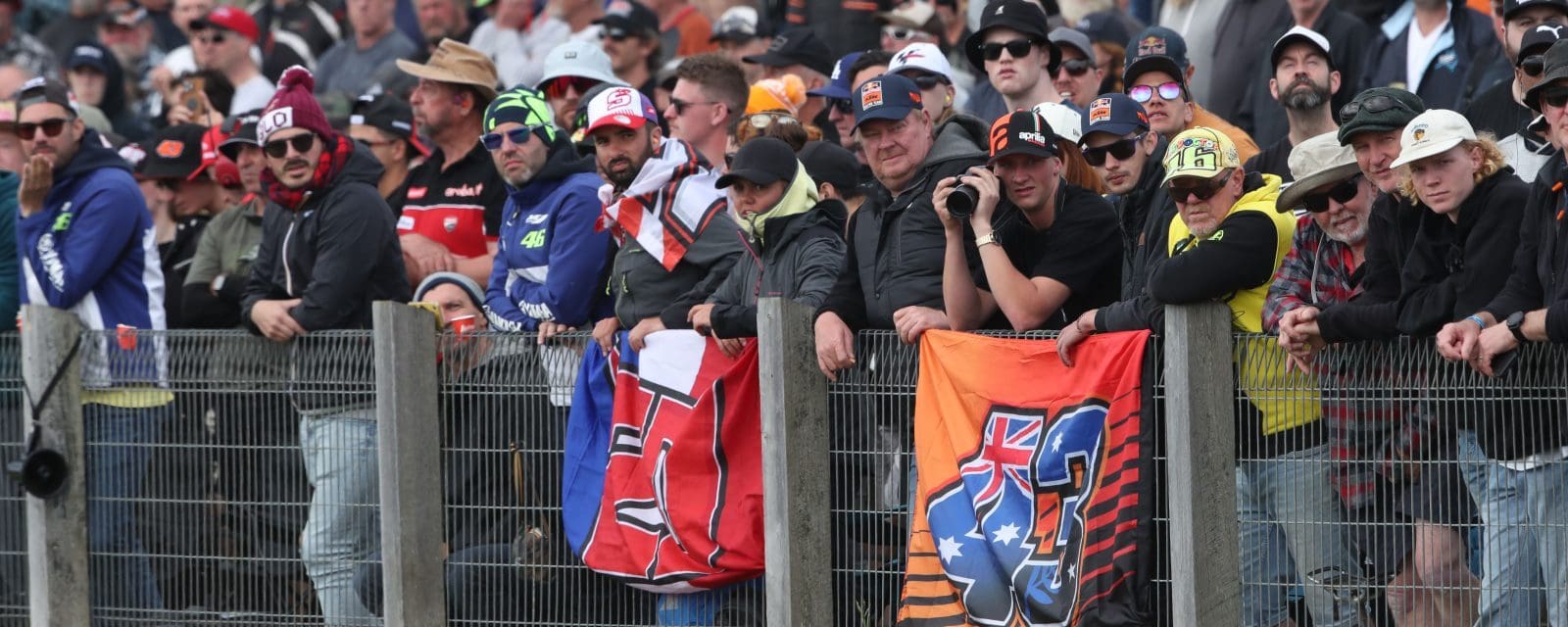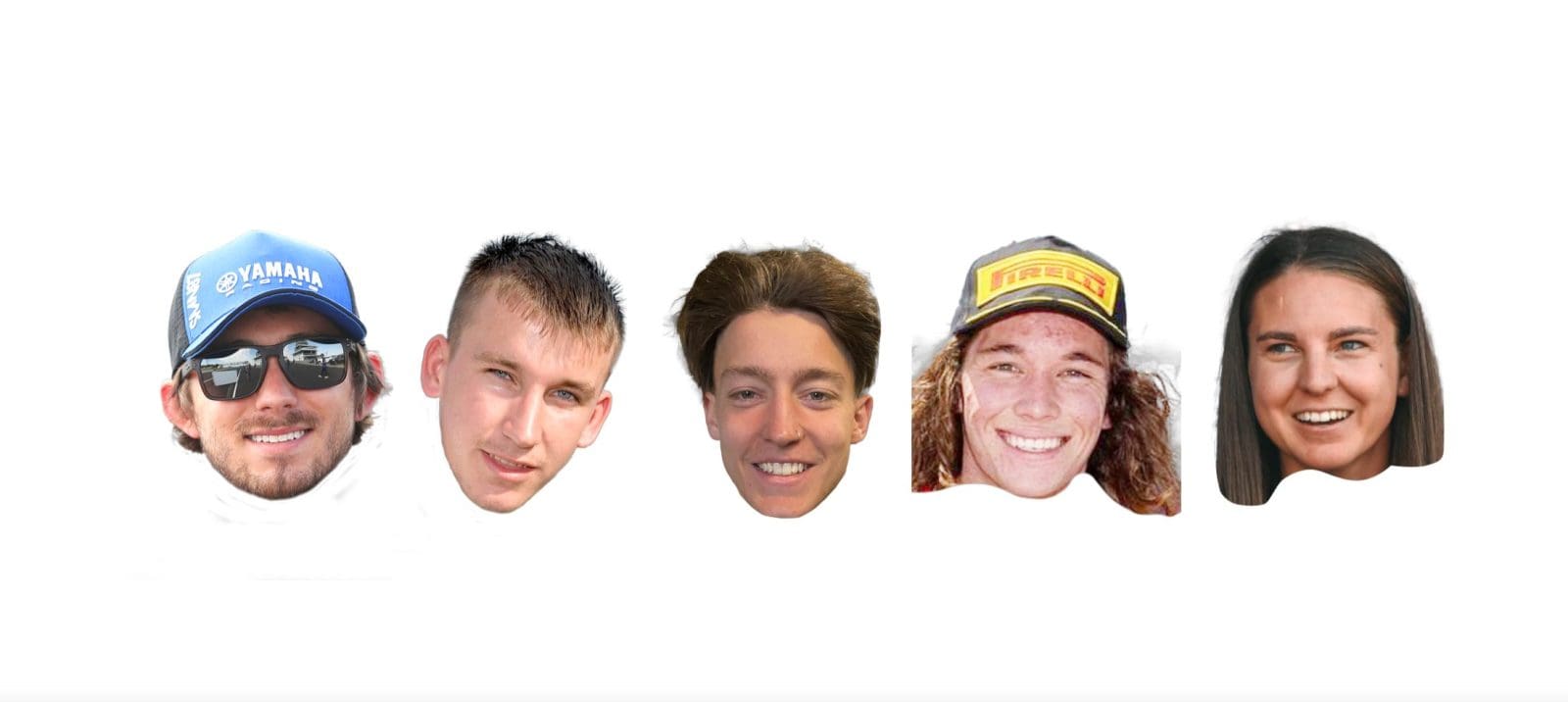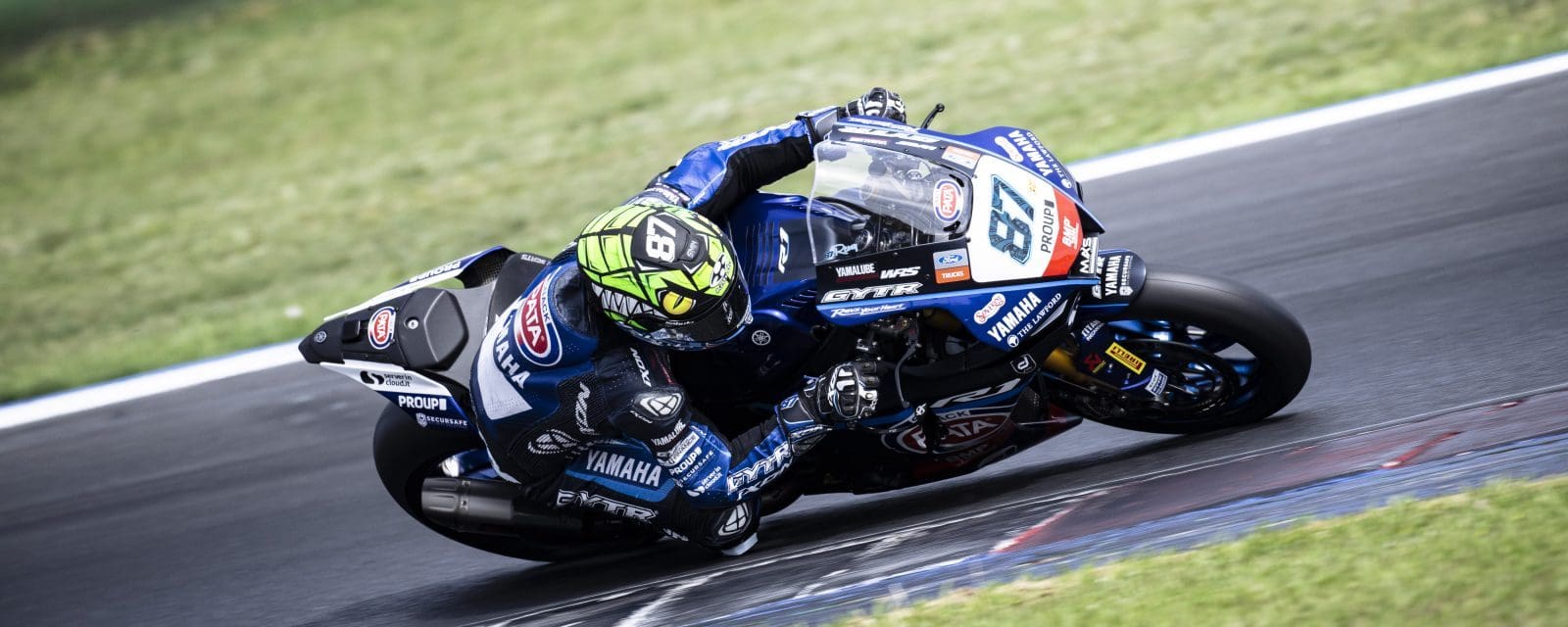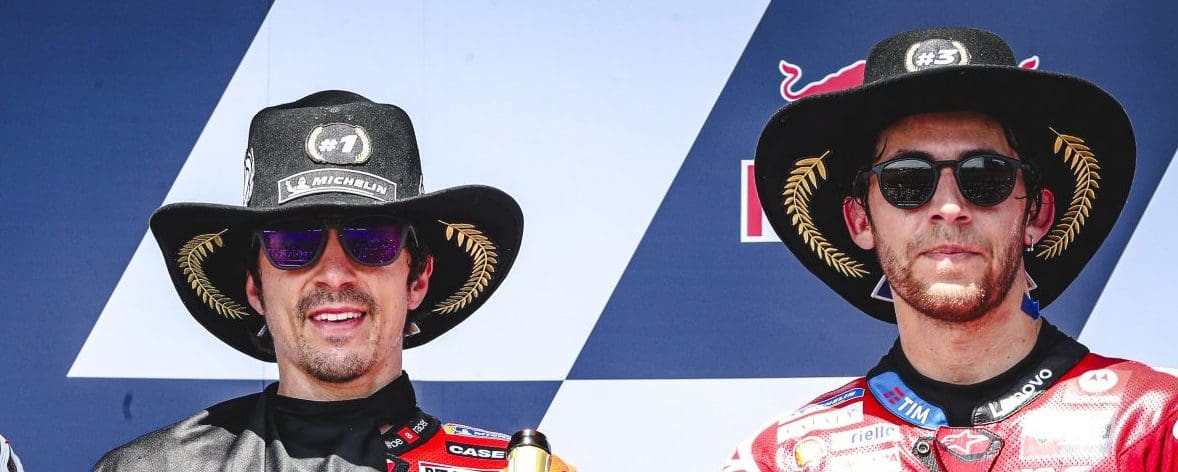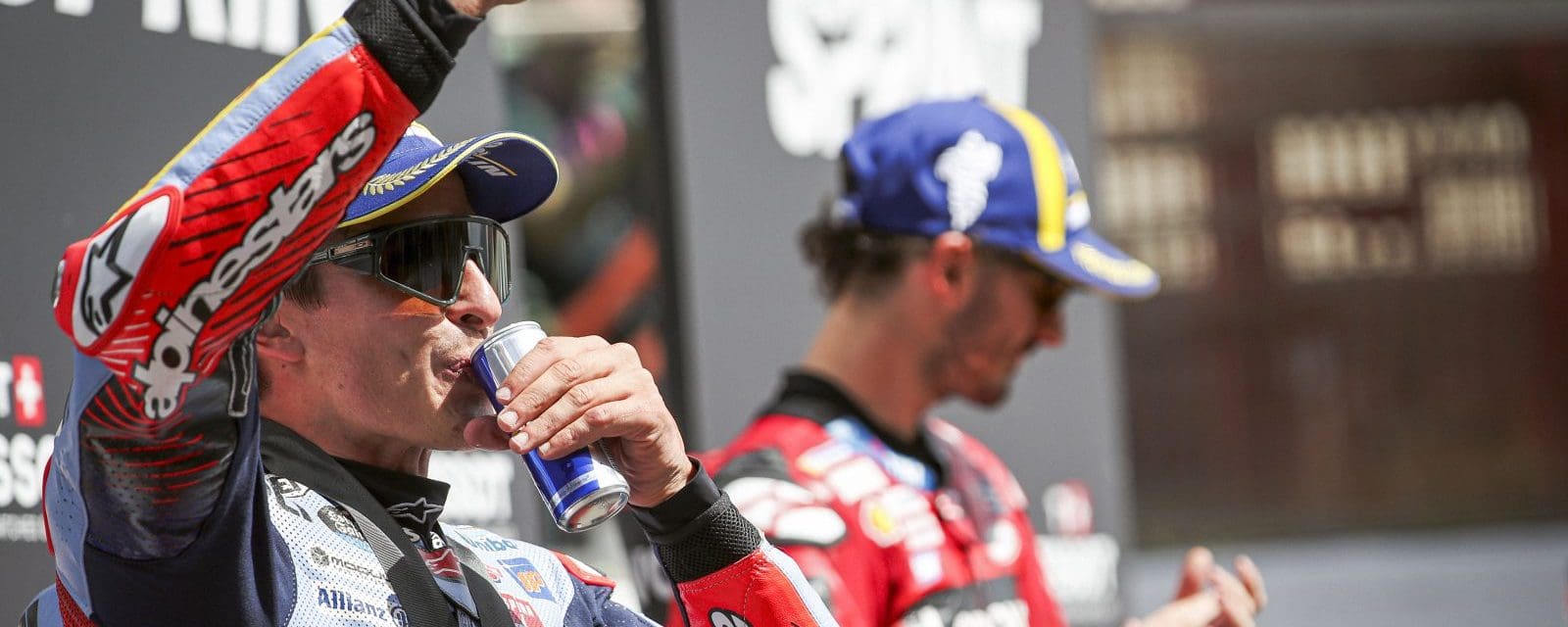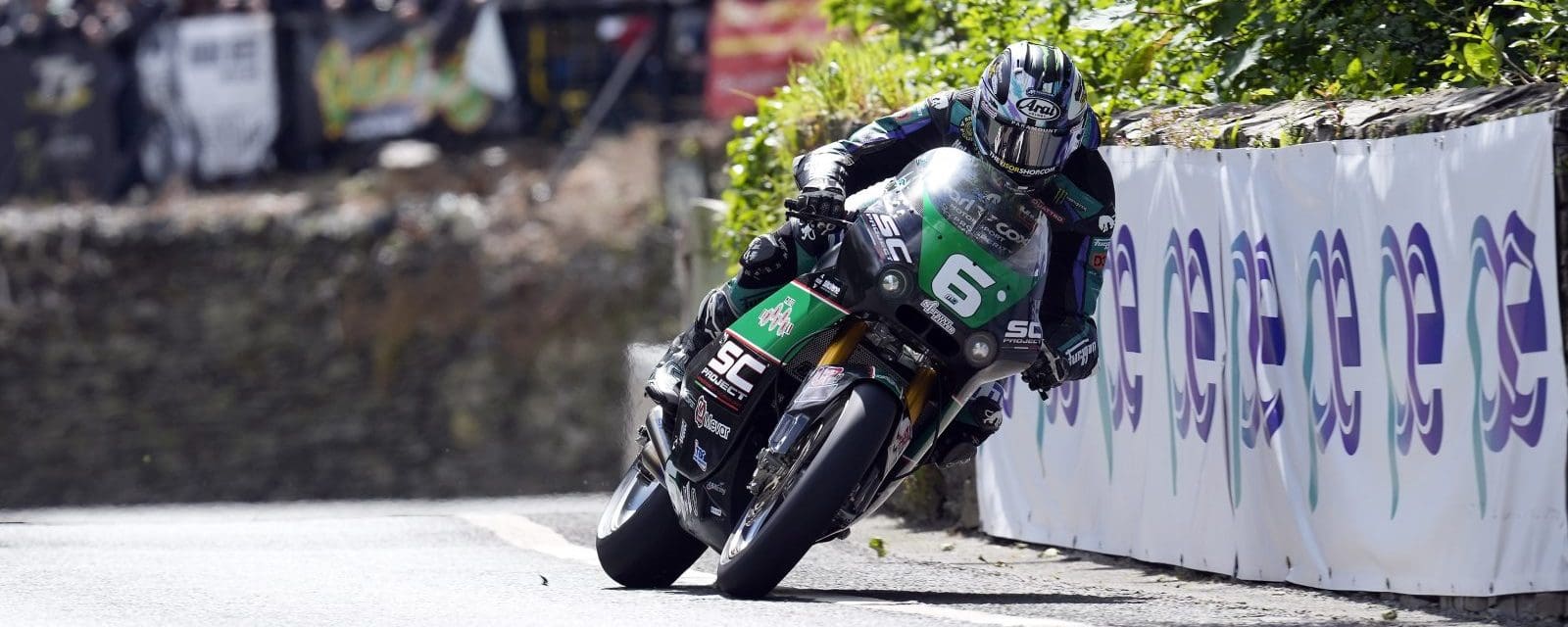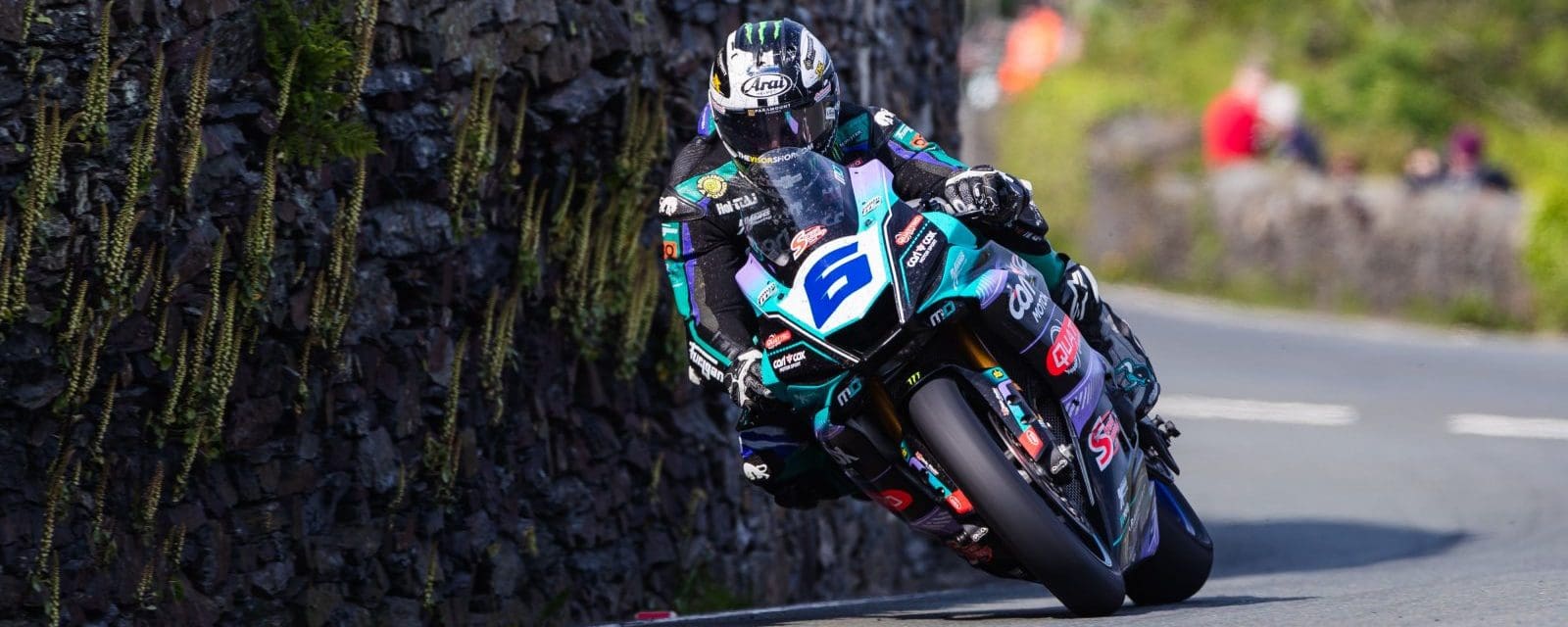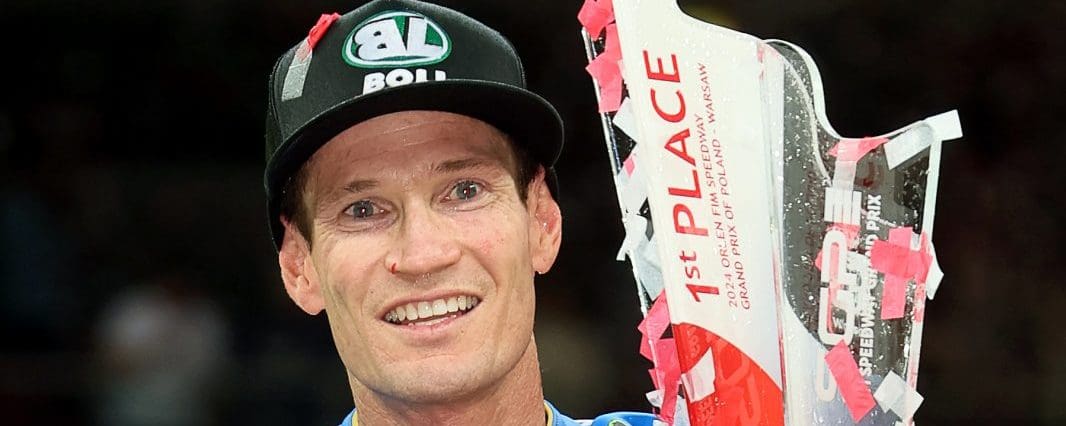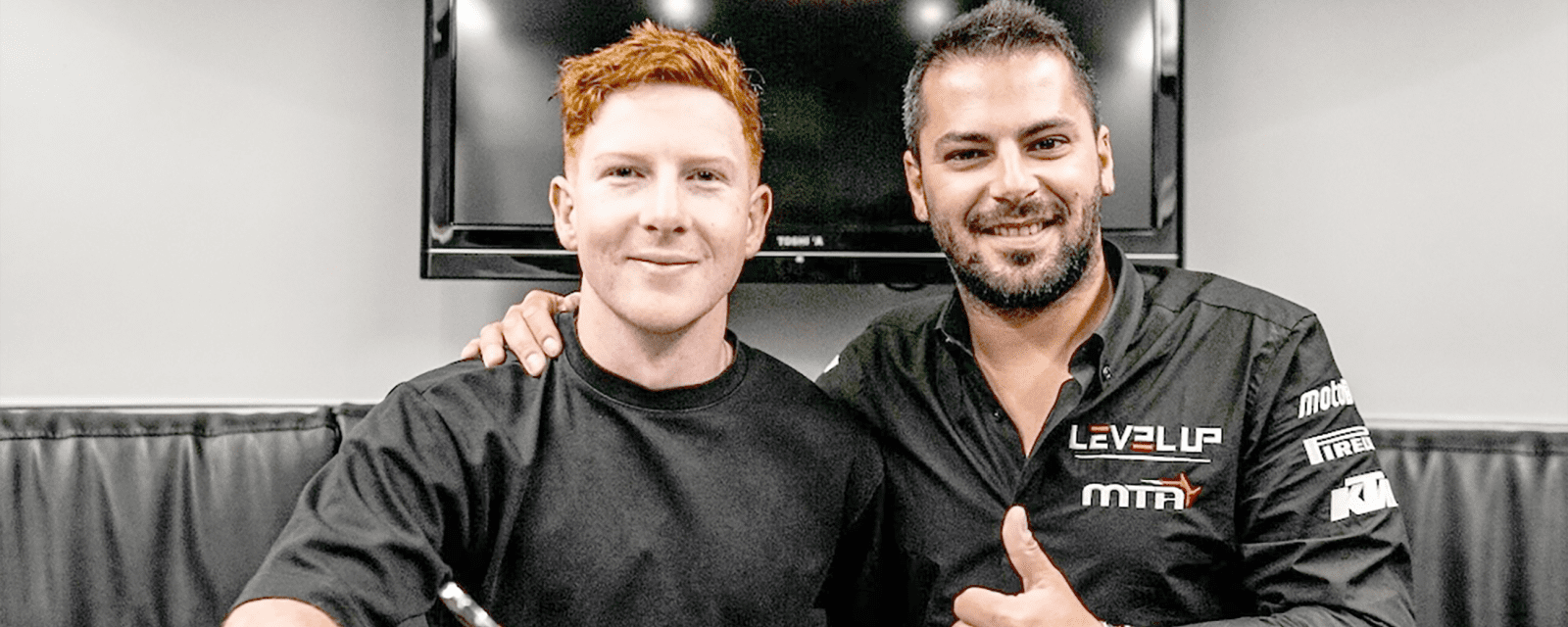A year ago, Estenson Racing’s JD Beach made history with a thrilling victory at the team’s home race in Chandler, Arizona, the Super TT. It was not only a career first for the dirt track and road racer; the victory ended a near 30-year win drought for a Yamaha Twin in the premier class of American Flat Track. It also marked the beginning of a new era, that of a modern flat tracker – the MT-07 DT.
So what exactly is the MT-07 DT? Simply put it’s a purpose-built chassis with a production-based Yamaha MT-07 engine. Multi-time road race champion Tommy Hayden, who heads the program for the Estenson Racing team, goes into a little bit more detail of what they can do within the rules of American Flat Track’s AFT SuperTwins class:
“From a chassis point of view it’s really similar to MotoGP, pretty much everything is a prototype,” Hayden explained. “In particular with our bike, we have made to our specification every piece of the chassis with very few restrictions per the rules. Whereas the engine, I would say it’s similar to World Superbike. It starts off as a production engine, but there’s very little production about it when we get finished with it. Even the parts that are not replaced are heavily machined and changed. The displacement is changed. Pretty much besides the shell of the engine cases, everything else is changed or modified.”
Although it was Estenson Racing that took it to the track for its debut American Flat Track season, the development didn’t start there. It was originally a project that was in house at Yamaha Motor Corporation USA (YMUS) started by Racing Division Manager Keith McCarty. After near-extinction with very little funding, flat track started to rebuild its momentum in 2015. There was an uptake in interest for the new MT-07 (then FZ-07 in the U.S.) engine for flat track racing and McCarty recognized the potential for the brand in the sport.
“The very first thing that happened was that we were getting a lot of requests for engines for flat track racing,” McCarty said. “We thought we could not only sell the engines but build some performance parts for it as well.”
They then went about developing a head with some help from Vance & Hines, cams by Web Cam and velocity stacks designed and made by YMUS. For the exhaust, they tested several pipes and settled on a Graves MT-07 pipe, which provided the best all-round performance. They started off with a 700cc, the standard size of the regular MT-07, before eventually boring it to close to 750cc’s.
“That project turned out really well,” McCarty said. “The G&G guys used our engine setup and there are a number of guys that ran Yamahas that bought those parts from us, and then had a lot of success with them in terms of consistency, reliability, all of those things. So that kind of led us to the next thing.”
That next thing was the chassis. As mentioned before, it’s not really as easy as just buying one off the shelf. There were a couple of options in the U.S. and McCarty went to California-based C&J, to see if they could design a chassis that was distinct to Yamaha.
“It didn’t turn out like what I was looking for,” McCarty said. “We didn’t want it to be just a Yamaha engine in a C&J frame, or look like any of the other models that they build. I wanted something more relevant and more modern in its design. That kind of got me going on doing our own frame.”
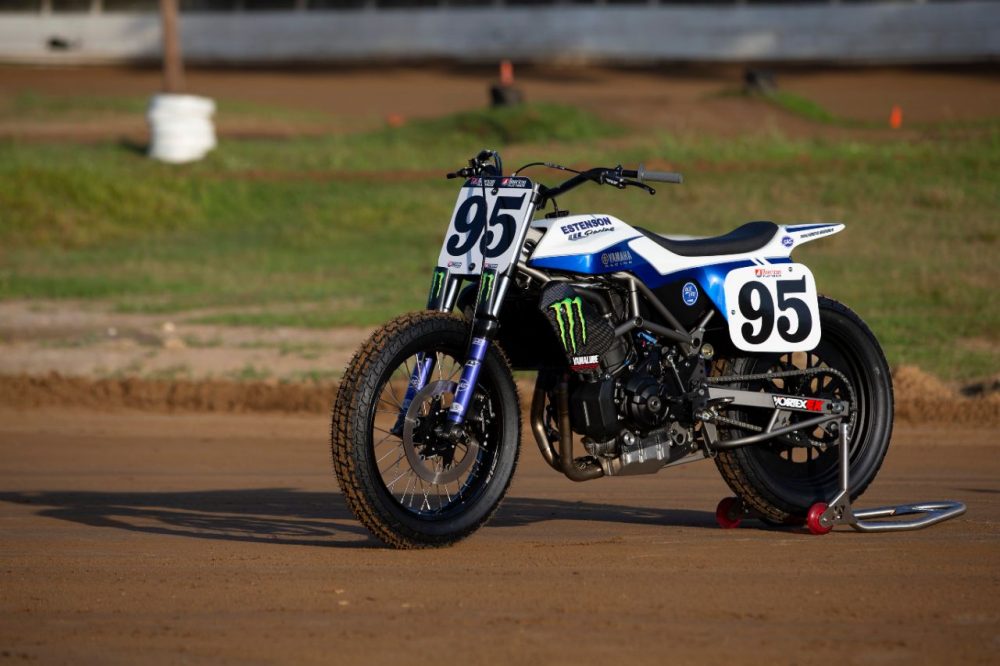
It just so happened that at the same time, YMUS’ motorcycle product line manager Derek Brooks (an ex flat track racer) was working on an idea of his own. He had gone to Jeff Palhegyi of Palhegyi Designs, who works with YMUS with a lot of future concept builds and prototypes. Wanting to build something special as the center piece for the Yamaha display at the AIMExpo, Brooks and Palhegyi had roughed out the idea of a ‘next generation’ flat track bike built on the new MT-07 CP2 engine. After some hallway discussions, Brooks, McCarty, and Palhegyi put their heads together to build not just a cool looking ‘concept bike’, rather a true flat track race machine for the future.
“We started brainstorming about building this frame so we could actually maybe build them and put them into production to race,” McCarty said. “I was responsible for the geometry and that sort of stuff. One of my main objectives was I wanted the bike to have a real air box, not just a K&N stuck on the back of the throttle bodies. I also went to Graves Racing’s Chris Lessing to help with the link and shock settings, which was inspired by road racing.”
Brooks, who was responsible for driving the overall look and styling, wanted to make sure that it was not only modern, but cohesive design.
“The last thing I wanted to build was a traditional looking flat track bike,” Brooks said. “I felt it was time to progress the styling. We brought in design elements of the MT-07 around the fuel tank and even some dirt bike cues on the rear fender. The main element of design though, was blending the whole body into one harmonious design instead of individual, elemental pieces.”
The DT-07 dirt tracker concept bike was unveiled as planned at the 2015 AIMExpo in 2015, complete with a Kenny Roberts replica paint scheme. It definitely turned a lot of heads with its looks, especially with the growing trend of street trackers, but as far as a race bike goes there was more work to be done. YMUS then took it back in-house and started readjusting some of the things that were off on the geometry.
“We took it out for several tests, had a variety of different guys ride it and got some pretty good results right off the bat,” McCarty said. “I wanted to take it to the next level. So we worked with Southland to make some frames, some units for us to possibly look at using them to race flat track or selling them.”
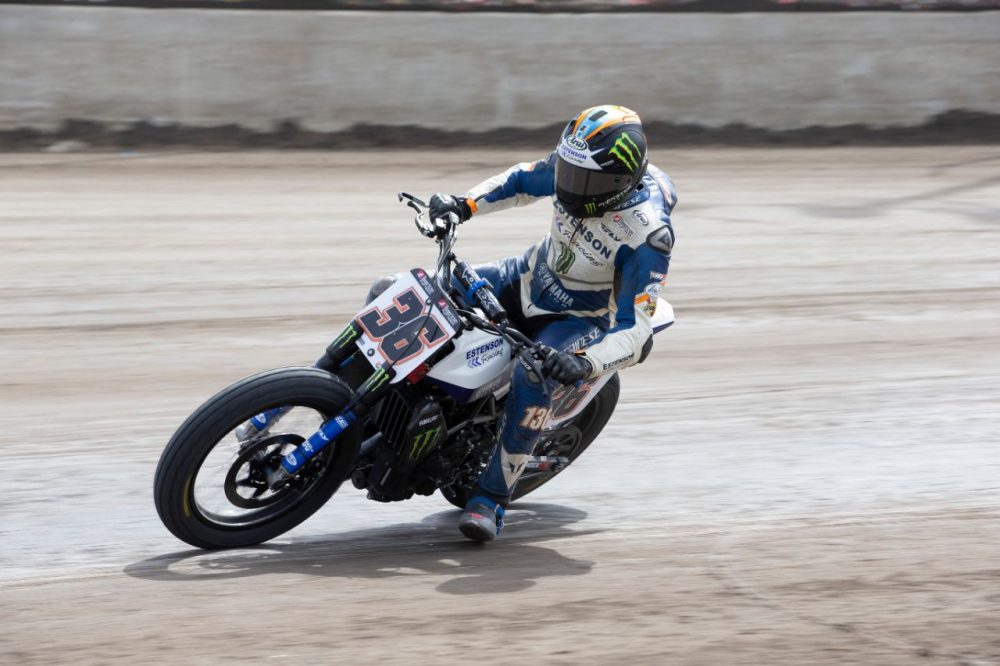
Around that same time, there was a guy in Arizona who started to get back to his motorcycle and flat-track-racing roots. A self-made business man in the logistics industry by the name of Tim Estenson who built his own very successful trucking company. He dipped his toe back into flat track racing by helping a rider race some of the Twins races in 2016 and stepped in the following year with a two-rider team, one AFT Twins rider and one AFT Singles. He found success in that debut season with an X Games win with Sammy Halbert and winning the 2017 AFT Singles title with Kolby Carlile. From there on out he kept building on that, and really came in big in 2019.
“Tim Estenson had been racing Yamahas,” McCarty said. “They were doing okay, but he wasn’t really happy with their direction. Tim and I put a little deal together where he could take the bike that we started with and take it from there.”
As for Estenson, he could’ve gone an easier route with an already established flat tracker, something that they had won on before, but his heart was set on Yamaha.
“Yamaha was bred into me as a young boy,” Estenson said. “It’s what I first started riding, so it’s more of a sentimental thing for me. When I got back into flat track with my team, I went racing with Yamahas and some other bikes, and had a couple wins with those, but I just kept thinking about the Yamaha and its legacy. Then there was this sense of, ‘if I’m winning on a purpose-built race bike, what have I accomplished?’ All of a sudden I said, ‘That’s it! We got to go back to the Yamaha.’”
He took what he been developing with the MT-07 the previous two seasons, took what YMUS had developed in house – the MT-07 DT – and went forth to build on that framework and take it to the race track. Estenson also brought in Palhegyi to help with the chassis development.
The team showed some potential for the all-new flat tracker with a Jake Johnson podium at the Daytona season opener and Beach’s landmark win for Yamaha that Estenson was hoping for pretty early in the season. Later that year, they backed it up with a Beach and Johnson 1-2 finish at the Buffalo Chip TT. While there was early success, there was some struggle as well developing a new bike at the race track. American Flat Track presents some unique challenges and not just with the dirt, there are four very different type of tracks: Miles, Half-Miles, Short Tracks and TTs.
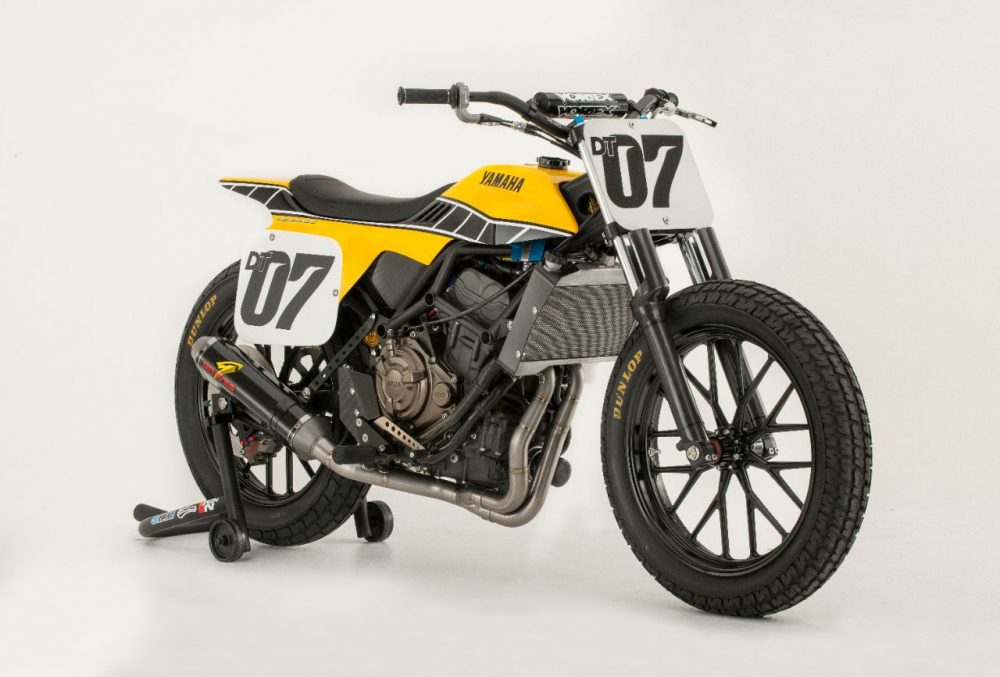
“I think what makes developing the flat track bike more difficult than let’s say MotoGP or superbike is that the conditions of the track change so much and so fast,” Hayden said. “When you’re testing it’s really hard to measure your gains and to really be confident that you’re making things better or worse, that it’s not the track changing. Literally in 10 minutes your racetrack can be a second slower if it’s too wet or too dry or a new line develops. Then there’s the types of track that vary so much. From the little, bitty small tracks to Mile ovals to some of the TTs with the jumps and different things. So I feel like that also makes it more challenging, even sometimes frustrating because you think you have something good but maybe it’s only really good on one specific kind of track or type of dirt or something like that.”
McCarty recognized those challenges flat track racing presented to developing a race bike, but could see that that was changing.
“I think it’s evolving,” McCarty said. “The limiting factor for all these bikes, no matter how big or how powerful they are, is the tires. The tires are a spec tire. They’ve been around for quite some time. They made some changes this year, but I think they were really hoping to get consistency out of the tire and not make it a tire game. There are things that can be done, adjustability is one thing, the suppleness let’s say, so the frame can help the tires get as much traction as possible. The power band is quite important for that as well.”
At the same time, with his experience in many different motorcycle racing disciplines, McCarty could see those issues as just being a part of development.
“Racing is racing, whether it’s a superbike or a flat track bike,” McCarty. “They have a lot of similar problems. You always hear the word traction wherever you go. Road racing and dirt track or even motocross bikes sometimes. Suspension plays a role. Every component on the bike plays a role. I think it just has a different title and it looks a little bit different, but all of the engineering things are not unique to just superbike or flat track. They all have the same things going on.”
Although Estenson was overjoyed to get that first win in Arizona and accomplish his goal of putting Yamaha back on top in the premier class, he wants more than just a win or two. Heading into the 2020 season he increased his already substantial investment in the project. Estenson expanded the team’s headquarters to add a machine shop, and added more full-time personnel, including adding a very experienced Technical Manger, Davey Jones, and a full-time electronics technician instead of sourcing it out. In addition to that, YMUS has also increased their support for the team.
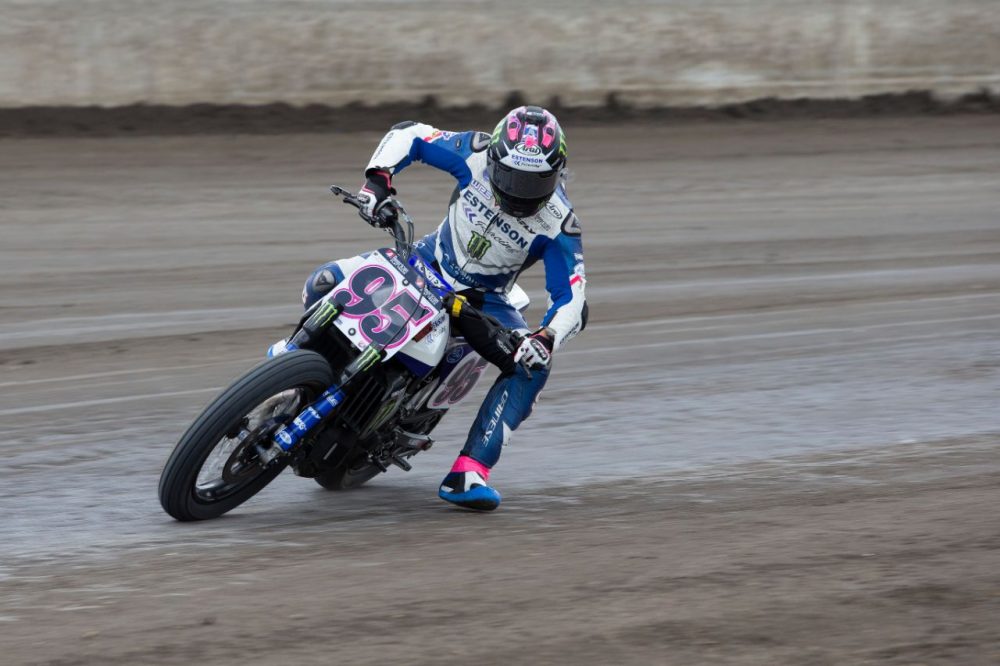
“We proved that the potential was there in the motorcycle,” Estenson said. “When we looked at the end of the year and we looked how many hundredths of a second we were behind, and we took an honest look at the motorcycle and started picking off places we felt we could get a tenth here or half a tenth here, to get up and run consistently in the front, and it looks very doable.”
With a year under his belt with the team and a year with the new Twin, Hayden has seen the project make a lot of forward progress in that time.
“It’s evolved a lot,” Hayden said. “The biggest thing this year is we really increased our level of sophistication on everything we’re doing as far as the measuring of the motorcycle, all of the data collection, all the geometry software, the way we’re dynoing the engines and our ability to now rapid prototype development parts inhouse. As a team I feel like we have advanced a lot in the way that we are working together as a group and in our discipline with our much more structured work flow process. I feel like we have a lot more accurate documentation of everything that’s going on, every change we make, every part we develop. We’re dealing with a lot of real, hard facts and real numbers instead of, I would say a looser estimate on some of that kind of stuff.”
The guy racing it, and the guy who has won a couple races already on it, has noticed the improvements even without turning a wheel on a racetrack yet with Covid-19 postponing the start to the 2020 season.
“I think throughout the year last year we definitely learned a lot about the bike, but made some mistakes as well,” Beach said. “So going into this winter we had a lot better plan and a lot more time with the bike. It went from a bike where I was almost dreading to ride each weekend because we knew it wasn’t getting better, to a bike that was a lot of fun to ride. Before, it was almost like, when you sat on the thing it did what it did and you couldn’t really put input into it and make the bike turn. That’s one thing that I think we’ve improved a lot this winter, how much better the bike responds to riding and be able to push just that little bit more. Also when you make changes to the bike and you can actually feel them. Before, you could make some big changes to the bike and the thing wouldn’t change at all. Of course we haven’t gone racing yet, I think it’s going to be really interesting. I also think we’ve got a better plan for when things aren’t going as well.”
As for Tim Estenson, his plan is pretty simple: “This is my love, my passion. It’s what I want to do. I want to win and win consistently on a Yamaha product.”
